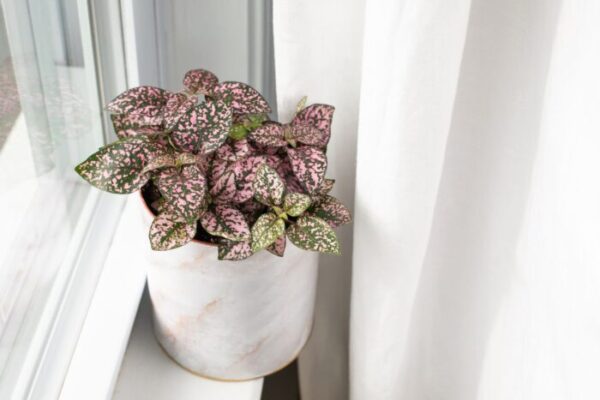Are you a fan of the charming pink polka dot plant? If so, you’ll be happy to know that it’s reasonably easy to get your pink polka dot plant to flourish. With the proper care and attention, you can keep your pink polka dot plant healthy and vibrant for years to come.
This blog post will cover the basics of caring for your pink polka dot plant Read on to learn more about how to get your pink polka dot plant to thrive.
Table of Contents
Tips of Caring Your Pink Polka Dot Plant
Place In Indirect Sunlight
One of the essential elements of proper polka dot plant care is ensuring your plant is placed in an area that receives indirect sunlight.
While the polka dot plant prefers bright, indirect light, too much direct sunlight can cause the leaves to scorch and fade. If your plant gets too much natural light, move it to a brighter but more shaded area.
This will ensure that your polka dot plant receives the proper light for optimal growth. Also, ensure that you keep it away from any drafty windows or vents, as this could dry out the soil quickly and lead to wilting of the pink polka dot plant’s foliage.
Allow The Soil to Dry Out In Between Watering.
When caring for your pink polka dot plant, allowing the soil to dry out in between watering is crucial. This plant loves a humid climate but does not like soggy soil. You should only water your polka dot plant when the top two inches of soil feel dry.
When you do water, make sure you water thoroughly. Water until you can see it flowing from the bottom of the pot. This will ensure that all the roots are getting enough moisture.
Fertilize Monthly During Spring and Summer
Fertilizing is an essential part of polka dot plant care. During spring and summer, your pink polka dot plant should be fertilized monthly to ensure it thrives and blooms with beautiful flowers.
The best fertilizer for a polka dot plant is high in phosphorus, encouraging the plant to produce flowers. Apply the fertilizer to the soil according to the instructions on the package and water the plant thoroughly afterwards.
Frequently Asked Questions
How Many Days Do to Water Pink Polka Dot Plant?
The amount of watering a pink polka dot plant requires on the environment in which it is placed. Generally, pink polka dot plants should not be watered more than once every five to seven days.
However, if the polka dot plant is placed in a hot and dry environment, it may require more frequent watering.
What Causes the Leaves of My Polka Dot Plant to Curl?
The pink polka dot plant (Hypoestes phyllostachya) is famous for its attractive foliage and occasional flowers. But when not properly cared for, it can become leggy, and the leaves may start to curl.
To ensure your polka dot plant is healthy and the leaves remain straight and vibrant, provide adequate light, let the soil dry out between watering, and fertilize monthly during spring and summer.
How Much Sun Does Polka Dot Plant Need?
When it comes to the polka dot plant needed, pink polka dot plant does best when it is grown in bright indirect light. The leaves can become leggy or sunburned if placed in direct sunlight. The flowers may also wilt or fade in direct sun.
Keep the plant away from drafts and cold temperatures, as these can cause the leaves to curl. For optimal growth, give your pink polka dot plant plenty of bright indirect light.
How To Root a Polka Dot Plant?
Rooting a pink polka dot plant is a great way to propagate the plant and can even be done in the comfort of your home. To start, begin by selecting a healthy stem with multiple leaves and ensure the branch has some root nodes.
Cut just below the nodes, removing any flowers or seed pods that may have formed. Place the cutting in a glass of water, ensuring the roots are submerged, and the leaves are above the water. Place the glass of water in an area that receives indirect light and change the water every few days.
Once the roots are well developed, it’s time to transplant them into the soil. Pick a pot at least 6 inches in diameter and fill it with well-draining soil.
Conclusion
Caring for a pink polka dot plant can be both simple and rewarding. As with any houseplant, keep an eye out for signs of curling leaves that could indicate a need for more or less light, water, or fertilizer.
With a little effort and patience, you can have a thriving pink polka dot plant that will add colour to your home.

